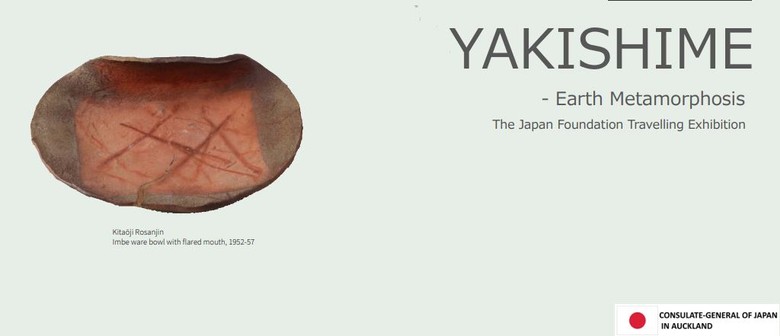Aaron Scythe: Wavering Lines (2023)
9a Earl Street, Queenstown
Ticket Information
Restrictions
Website
Listed by
Cultures merge and melt together in the sensual organic ceramics of Aaron Scythe.
A devotee of Japanese traditional pottery, the artist spent fifteen years in Japan before the devastation of the country's 2011 earthquake and tsunami forced him back to his native New Zealand. Unsurprisingly, the techniques and forms of Scythe's vessels owe much to Japanese art.
In particular, the technique of yobitsugi is a major component of Scythe's work. This style, literally referring to a grafting of material, is closely related to kintsugi and wabi-sabi, which celebrate the history of a ceramic by drawing attention to its flaws and damage. Whereas these techniques usually begin with a vessel in need of repair which is then re-formed, in yobitsugi grafting is applied to a new article so that it appears to have been made from disparate parts.
The style celebrates the imperfect in a way which is beautifully unpretentious and honest, and creates works which are simple and beautiful while having the everyday charm of working pottery. There is no attempt for factory-like symmetry; the artist treats the natural "flaws" of the vessels’ lines as gifts, embracing the natural behaviours and characteristics of the clay to harness what some might consider mistakes.1
In Scythe's hands, yobitsugi is deftly used to combine elements from different strands of the artist's heritage and artistic lineage. The effect of using different clays and glazes for his patches gives the pieces a natural exuberance. Patterns appear and are submerged: traditional and modern Japanese art ranging from ukiyo-e to shunga, willow pattern, ancient hieroglyphics, New Zealand images, and the words of Māori prophets shift and merge into a compelling whole. These design elements, which take the majority of Scythe's creative process, are a personal language and narrative, continually sitting on the edge of comprehension. When combined with the forms of utilitarian vessels (such as with the several "Yobitsugi Style Teapots", the effect is both charming and gently humorous.
Many of Scythe's works also feature elements of Japanese oribe art — distorted, fully-functional vessels in which glass-like swathes of rich dark green glaze run down the surface. When this technique is combined with the artist's painted cameos, as in Oribe Large Donut Vase [26610] and Iro-Shino Oribe Bottle [26604], the effect is as sensual as it is instantly appealing.
1. Lisa Orr and Nick Weddell, "Studio Visit: Aaron Scythe, Whanganui, New Zealand," Ceramics Monthly, March 2019. Accessed at https://ceramicartsnetwork.org/ceramics-monthly/ceramics-monthly-article/Studio-Visit-Aaron-Scythe-Whanganui-New-Zealand.
Log in / Sign up
Continuing confirms your acceptance of our terms of service.




Post a comment